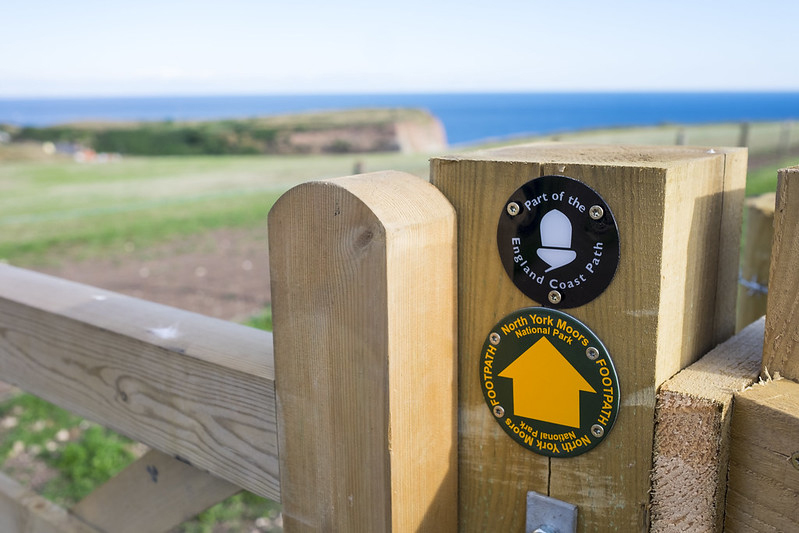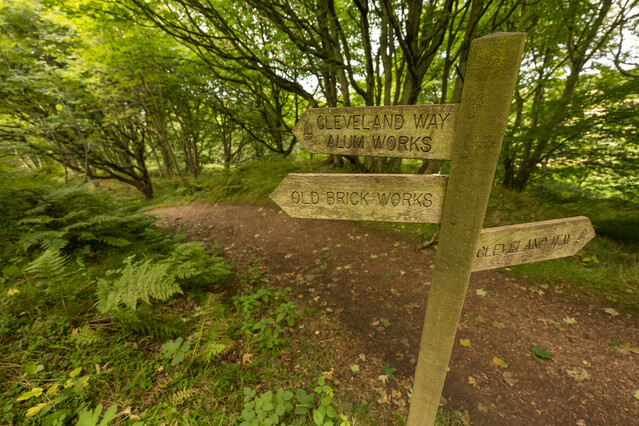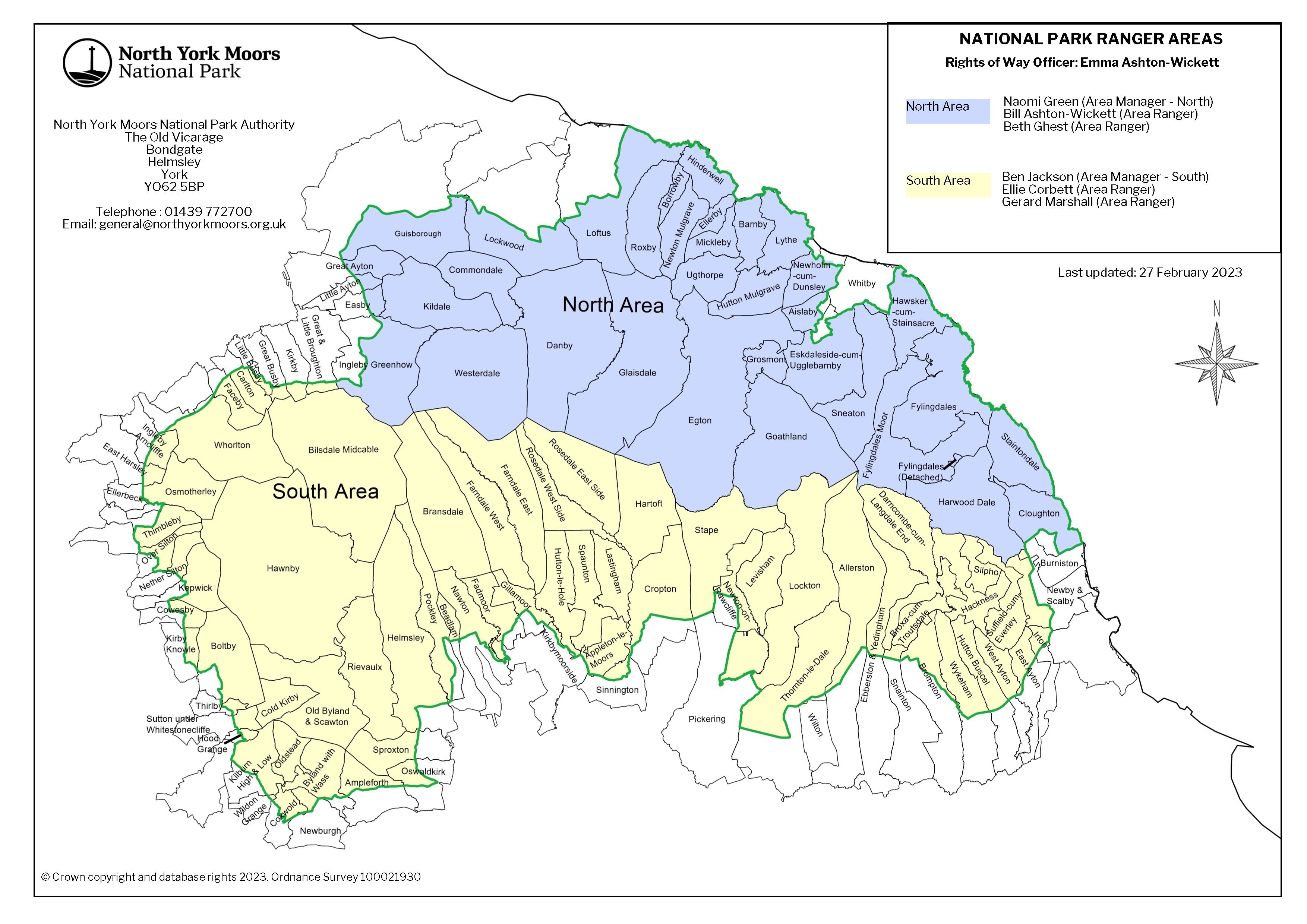Landowners’ responsibilities for Rights of Way
A landowner has a legal duty to ensure that a Right of Way on their land is unobstructed and open for use at all times. Shown below is some general information and how this Authority can help. Please contact us for more details.
Existing Gates and Stiles on Rights of Way – maintenance
Current legislation dictates that the maintenance of these items are the responsibility of the landowner, even if this Authority installed it on their behalf in the past. However, on paths promoted by this Authority, gates and stiles can sometimes be repaired or replaced free of charge. On other paths, landowners can claim a contribution towards these costs.
New Gates and Stiles across Rights of Way – a section 147 Agreement

These can only be erected in order to control livestock or other animals, not for privacy or security, and consent from this Authority must be obtained beforehand (a section 147 Agreement).
New permanent fences across Rights of Way
If a Right of Way will be affected by a proposed new fence, then a gate or stile will be required so as not to block the path. Consent for the new gate or stile must be obtained before the fence is erected.
Electric fences across Rights of Way
Their installation must be authorised by this Authority beforehand and be insulated where crossing a stile or beside a gate, so access isn’t restricted. The H&S Executive advise that a warning sign(s) is needed next to the stile(s) or gate(s).
Electric fences alongside Rights of Way
Again, their installation must be authorised by this Authority beforehand and 2 metres (6ft) clear width left for a Footpath, 4 metres (13ft) for a Bridleway and 5 metres (16ft) for a Restricted Byway or Byway Open to All Traffic must be provided for access. The H&S Executive advise that warning signs are needed at regular intervals alongside the path.

Barbed wire across Rights of Way
Barbed wire must not be strung across a Right of Way so as to prevent a walker or rider access along it. In the event a person and/or horse sustains injury from the barbed wire, the landowner could be held liable.
Barbed wire on gates or stiles on Rights of Way
Do not put new barbed wire on/across stiles or gates/gate posts but in places where barbed wire is already present, please remove the barbs close to these items so they don't catch hands, clothing, horses or dogs.
Barbed wire alongside Rights of Way
If barbed wire is strung alongside a Right of Way, safe passage must be made for users. Allow 2 metres (6ft) clear width for a Footpath, 4 metres (13ft) for a Bridleway and 5 metres (16ft) for a Restricted Byway or Byway Open to All Traffic - allow even more on unsound ground.
Animals on or alongside Rights of Way
Any animal that could injure a person and/or horse must not be kept in the field or yard where a Right of Way runs, e.g., dogs, other horses and all types of livestock. If an animal that has intimidated or injured a person and/or horse in the past does it again, then the owner could be held liable and maybe prosecuted too.
Any animal (such as aggressively barking dogs or ones roaming freely) either on or adjacent to a Right of Way, must not intimidate the public using a Right of Way and it should be obvious that the animals cannot reach the person(s) and/or horse(s).
Avoid grazing horses in fields crossed by Public Bridleways, Restricted Byways and Byways Open to All Traffic, as loose horses can sometimes act aggressively to ridden ones.
Bulls
They may only be in a field crossed by a Right of Way if they are:
- Under 10 months old;
- Are not of a recognised dairy breed;
- Are accompanied by cows or heifers.
Landowners are advised by the H&S Executive to erect warning signs saying, "Bull in Field". Please note, they must be removed when the bull is not there.
Electric Fences - Across a Right of Way:
Consent from this Authority must be obtained before installation of an electric fence and it must be insulated where it crosses a stile or gate, so that access is not restricted. The H&S Executive advise that warning signs are needed on all electric fences.
Electric Fences - Alongside a Right of Way:
Allow 2m (6ft) clear width for a Footpath, 4m (13ft) for a Bridleway and 5m (16ft) for a Restricted Byway or Byway open to All Traffic. The H&S Executive advise that warning signs are needed on all electric fences.
Barbed Wire either across or alongside a Right of Way:
Barbed wire must not be strung across a Right of Way to purposely prevent a person access along it. In the event a person and/or horse sustains injury from the barbed wire, the landowner could be held liable.
If barbed wire is strung alongside a Right of Way, safe passage must be made for users. Allow 2m (6ft) clear width for a Footpath, 4m (13ft) for a Bridleway and 5m (16ft) for a Restricted Byway or Byway Open to All Traffic - allow even more on unsound ground. Do not put barbed wire on stiles or gates/gate posts and remove the barbs close to these items so they don't catch hands, clothing, horses or dogs.
Surfaces
Before any changes are made to the surface of a Right of Way, consent must be sought from this Authority. Any new surface must be convenient to walk/ride over; so rough rubble, loose or large stones are not acceptable; it must be dusted off with smaller compacted stone. Surfaces for a Bridleway, Restricted Byway and Byway Open to All Traffic must be non-slip for horses. Please follow the link below for more information on creating new tracks and when planning permission is required.
Planning Advice Note for Agricultural, Forestry and Recreational Tracks
Overhanging Vegetation:
It is the responsibility of the landowner to ensure that overhanging trees or hedges alongside a Right of Way do not encroach onto the width of the path. A clear corridor must be left for users:
- Footpaths - 2m (6ft) width x 2m (6ft) height;
- Bridleways – 3m (9ft) width x 2m (6ft) height;
- Restricted Byways and Byways Open to all Traffic - 5m (16ft) width x 5m (16ft) height.
Surface Vegetation:
Vegetation on the surface of a path (except crops) is the responsibility of this Authority to keep cut down. Please contact us if there’s Right of Way on your land that requires strimming.
Misleading Signs
Any sign that discourages a user on a Right of Way is unlawful. These include signs like "Keep Out", "Dangerous Dog", "Private", etc.
Landowner’s Duty of Care
Landowners must protect people and trespassers from sources of danger such as slurry lagoons, mines or quarries and are advised to obtain or check their public liability insurance to make sure they have adequate cover.
Shooting across a Right of Way
Landowners may shoot on their land but not in such a way as to endanger the public using a Right of Way. If a drive crosses a Right of Way, politely ask users if they would wait while the drive passes but if their response is negative, please stop the drive and allow the users to proceed safely.
Ploughing and Cropping - Cross-field paths:
Cross-field paths must be reinstated within 14 days of the first cultivation and 24 hours of the second. Tractor wheelings are the best way of defining a path across a field. Do not plough or cultivate any unsurfaced road or Byway Open to All Traffic. Ensure that the following widths are defined:
Public Footpath – 1m wide (3ft)
Public Bridleway – 2m wide (6ft)
Restricted Byway – 3m wide (9ft)
Ploughing and Cropping - Field-edge paths:
Do not plough out paths that run alongside field boundaries and ensure that the following widths are left:
Public Footpath – 1.5m (5ft)
Public Bridleway – 3m (9ft)
Restricted Byway – 3m (9ft)
Enquiries
Please direct enquiries to the Senior Ranger for your area of the National Park:
Naomi Green (North Area): n.green@northyorkmoors.org.uk
Ben Jackson (South Area): b.jackson@northyorkmoors.org.uk

